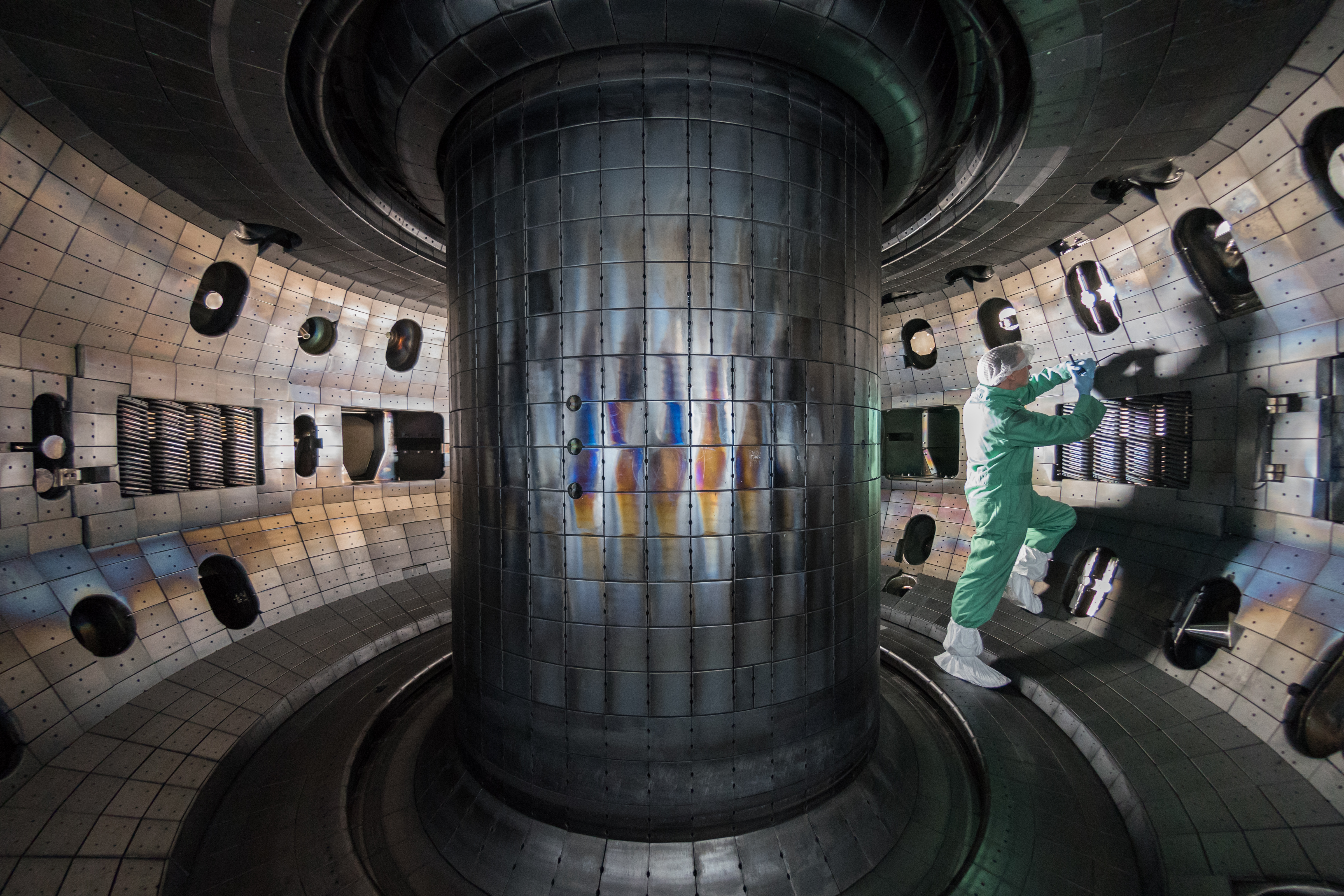Nuclear Fusion
- Introduction to Nuclear Fusion
- Physics of Nuclear Fusion
- Energy from Nuclear Fusion
- Fusion Reactors
- Confinement and Heating
- Fusion Reactor Design
- Radiation and Safety
- Fusion Reactor Materials
- Fusion and the Environment
- Challenges in Nuclear Fusion
- The Future of Nuclear Fusion
Fusion Reactors
Understanding the Tokamak Fusion Reactor

Device using a magnetic field to confine a plasma in the shape of a torus with the plasma stabilized by a current.
The Tokamak Fusion Reactor is one of the most promising and extensively studied designs for producing controlled thermonuclear fusion power. The name "Tokamak" is a Russian acronym for "toroidal chamber with magnetic coils," reflecting its unique design.
Definition and Overview
A Tokamak Fusion Reactor is a device that uses a powerful magnetic field to confine plasma in the shape of a torus. The magnetic field is used to keep the plasma away from the machine's walls, so it doesn't cool down and lose its potential to generate large amounts of energy.
Working Principle
The working principle of a Tokamak Fusion Reactor is based on the concept of magnetic confinement. The plasma, a hot, ionized gas consisting of atomic nuclei and free electrons, is confined in a vacuum chamber and heated to temperatures exceeding those at the core of the sun. At these extreme temperatures, the atomic nuclei overcome their natural repulsion and collide, resulting in nuclear fusion. The fusion process releases a large amount of energy, which can be harnessed to produce electricity.
The magnetic field in a Tokamak is created using two sets of coils: the toroidal coils, which wrap around the torus, and the poloidal coils, which are positioned vertically. The combination of these two sets of coils creates a helical magnetic field that confines the plasma and keeps it stable.
Key Components
The key components of a Tokamak Fusion Reactor include:
- Vacuum Vessel: This is the toroidal chamber where the plasma is confined.
- Magnetic Coils: These are used to create the magnetic field that confines the plasma.
- Divertor: This component removes waste products from the plasma.
- Neutral Beam Injectors: These are used to heat the plasma to the required temperatures for fusion.
Advantages and Disadvantages
The main advantage of the Tokamak design is its proven ability to confine plasma effectively and achieve the conditions necessary for fusion. It has been the focus of fusion research for several decades, and the knowledge and experience gained have led to significant advancements in this design.
However, the Tokamak design also has some disadvantages. The complex and precise engineering required for the construction and operation of a Tokamak reactor is a significant challenge. Additionally, maintaining the stability of the plasma for a long duration is difficult.
Despite these challenges, the Tokamak Fusion Reactor remains a promising approach to achieving controlled nuclear fusion, and significant research and development efforts are ongoing to overcome these obstacles and make fusion power a reality.